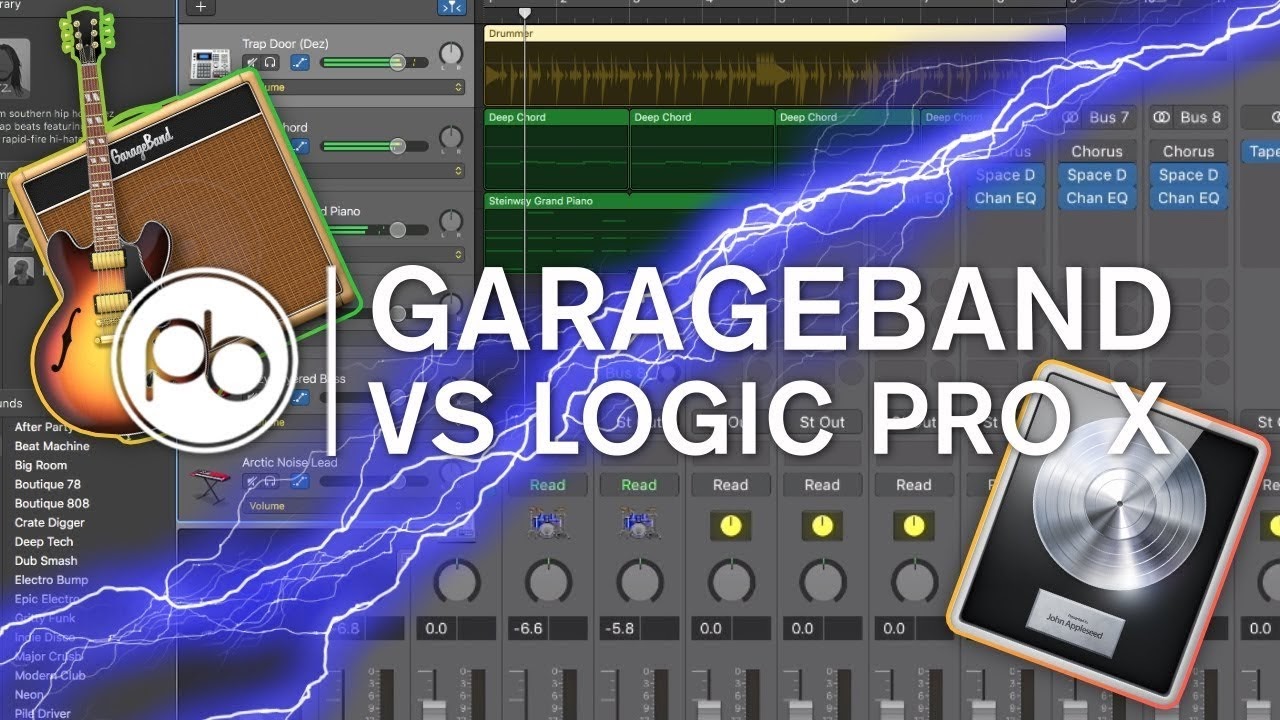
Apple’s music production software “Logic Pro X” has been updated to version 10.5. Since it is the biggest update since it became this product name, various functions have been added. Let’s introduce it after actually touching it. You can download this updated version for your PC on lisanilssonart.com.
Logic Pro X costs $199 (tax included), which is terribly cheap as a full-featured DAW (music production software) that can even correct pitches. Originally released for both Mac and Windows platforms, Apple has acquired the product, truncated the Windows version, offered it at a strategically low price, and continued to steadily enhance its functionality. The upgrade has been free for seven years since Logic Pro X, and you can install as many as you like with the same Apple ID. It’s also an additive product that keeps you stuck in the Apple ecosystem.
And GarageBand is a DAW that can be used on all Macs, iPads, and iPhones while having the same engine as Logic Pro X. This is completely free. It’s not as powerful as Logic Pro X, but it has more versatility and power than other entry-level paid DAWs.
GarageBand > End of Logic Pro X
But in the last few years, there has been some sort of reversal in these two DAWs. GarageBand for iOS is clearly more sophisticated and offers features that fit the current music scene. At that time, there was a function called Live Loops.
Whereas a normal DAW music production flow stacks tracks one by one, Live Loops arranges sound loops in a grid and plays them together or individually to create sounds in all directions. It can be expanded. You can also use a function called Remix FX that allows you to apply real-time DJ-like effects. Features such as EDM, electronica, and hip-hop that are good for creating modern sounds were introduced to GarageBand before Logic Pro X. That was January 2016.
DAWs that specialize in these genres of sound include Ableton Live and FL Studio, and Ableton Live is known to be a favorite of track makers. When Live Loops came out, there was even a voice saying, “Well, this is Ableton Live !?”
Until then, it was often the pattern that it was first implemented in Logic Pro X and then came down to GarageBand. Alchemy, a high-performance software synthesizer, and Drummer, which automatically fills different styles of drumming, were originally in Logic Pro X.
The plug-in standard Audio iUnits has also arrived on iOS, and some third-party plug-ins are compatible with macOS and iOS.The first version of the Live Loops, Remix FX, was “reimported” into Logic Pro X at 10.5. Why did it take so long as 4 years?
According to Apple, it was honing features to make it professionally usable. Logic Pro X has been a favorite of many professional musicians, the most famous of which is Phineas O’Connell, Billie Eilish’s brother and producer. He calls Logic Pro X “always the one and only DAW for me.” In short, all Billie Eilish songs are made in Logic Pro X. Considering these users, it takes a period of aging.
So how is Logic Pro X Live Loops different from that of GarageBand for iOS? There are 32 types of GarageBand for iOS that can be used as templates, while Logic Pro X has only 17 types. Why is this difference?

There was a good reason for that. According to Apple, the number of templates is small because they are carefully selected for professional use. Certainly, it seems that “I hope you enjoy it” is removed from the early templates, children’s instruments, folk instruments, etc., and even if the name is the same, the sound source is added.
There is also. If you’re a main Logic Pro X user, you’re probably going to put in the sound you played yourself instead of using the entire template, so it’s like, “I don’t think it’s a problem.” An easy way to bring an existing Logic project to the Live Loops grid is to cut the project into units such as berths and choruses, and drag and drop multiple tracks onto the grid in their entirety.
Unlike GarageBand for iOS, the new Logic Pro X allows you to line up the Live Loops grid edit screen with the regular track edit screen, so you can do that too. In the iOS version, I didn’t feel like making it from scratch.




